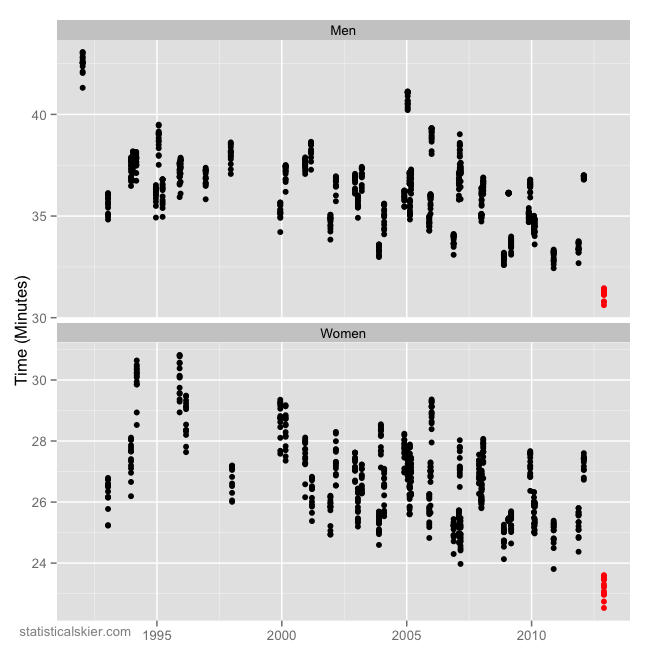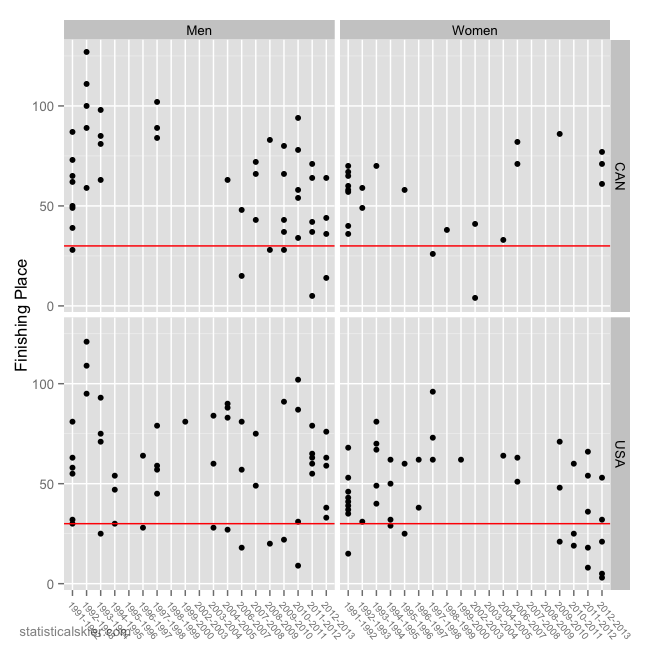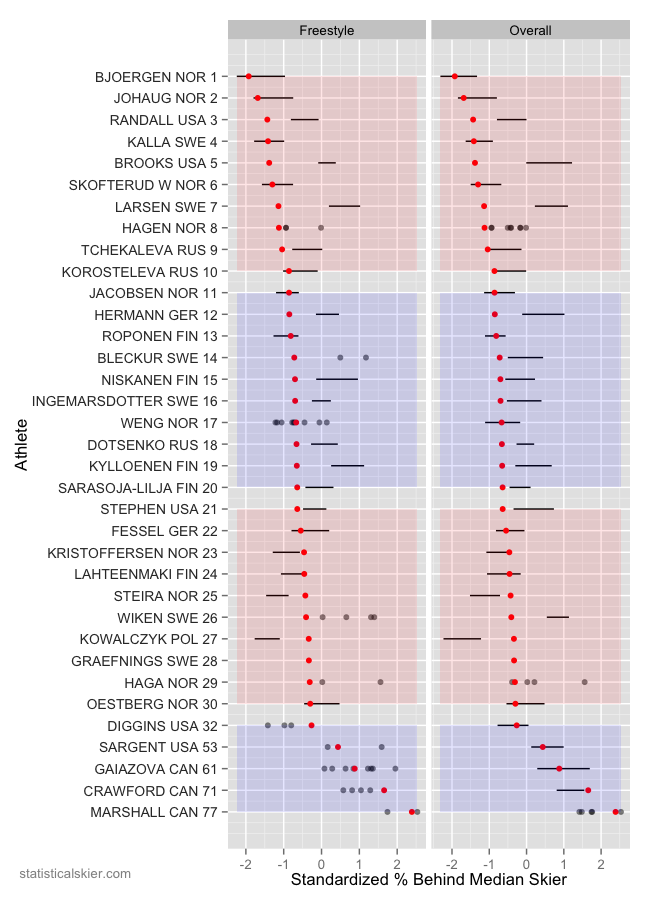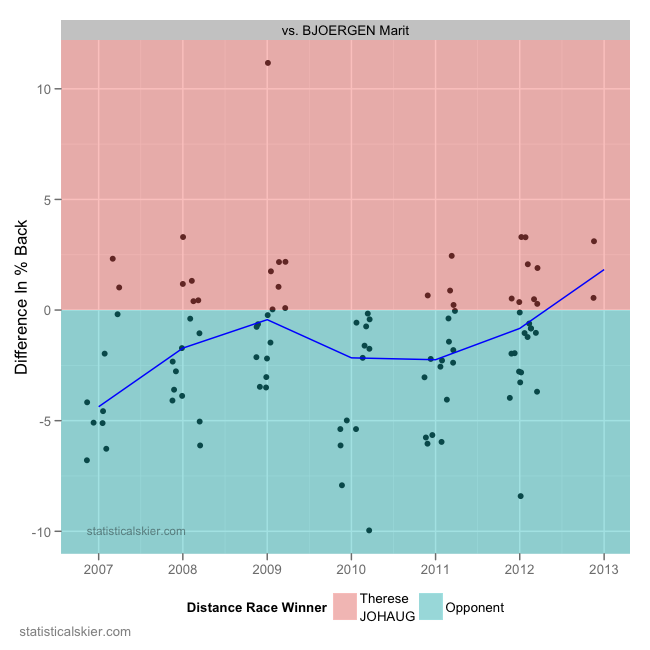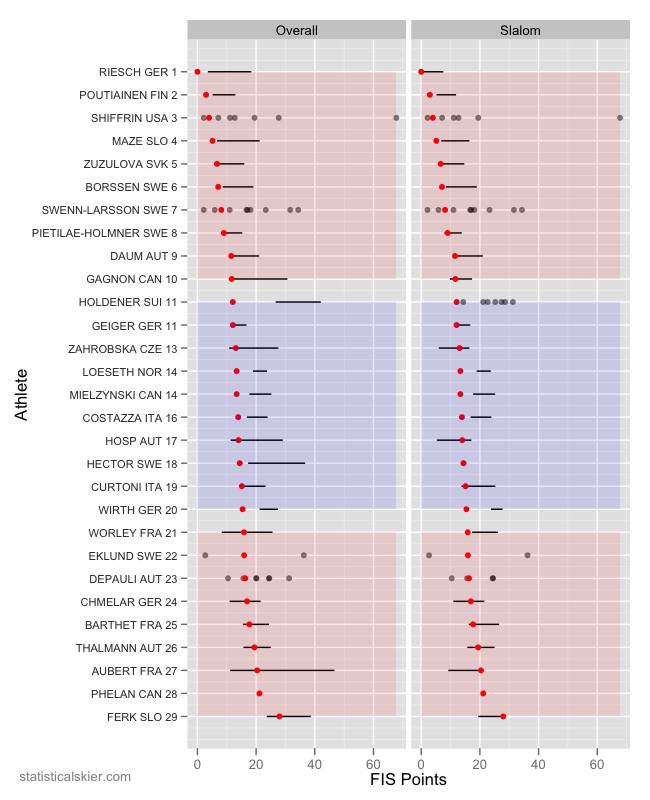Gällivare: Wrap-Up
Continuing on with some notes about the World Cup opener in Gällivare last weekend.
It’s always the case in a season opener that much will be made of a handful of people who had unexpectedly good or bad races. Usually, this is an overreaction. But let’s play that game anyway and look at two skiers chosen more or less at random: Andrew Musgrave and Justyna Kowalczyk.
This is a graph of each of their major international results over different points in the season, with the Gällivare race highlighted in red. As you can see, Kowalczyk seems to have a bit of a tendency to start off fairly slow (I believe she said as much herself after this weekend’s race). Still, her Gällivare race was somewhat worse than usual for her, even this early in the season.
On the other hand, Andrew Musgrave tends to display the opposite trend, skiing considerably faster early in the season than late. And, like Kowalczyk, his race in Gällivare was unusually good for him, even granting his overall trend throughout the course of a season.
US Women’s Depth
The relay aside, the US women displayed a level of team depth in Saturday’s individual race that we really haven’t seen in a distance race in a long time. The US (men or women) have only placed two skiers in the top ten in a distance race twice since 1992: the Gällivare 10k freestyle, and the 2.5k prologue at the World Cup Finals last season (Kikkan Randall was 7th, Jessie Diggins was 8th). And the prologue probably doesn’t even really count as a “real” distance race for many people…
The Canadians, of course, have managed to place two skiers in the top ten much more frequently. The Canadian men (mostly Harvey and Kershaw, of course) have done this 16 times, and the women two times (Beckie Scott and Sara Renner). Only two of those races (both men’s events) were short, prologue style events, and there is a healthy mix of classic, freestyle and pursuits in the mix. Not terribly surprising, given Harvey and Kershaw’s ability to contend for the WC overall title recently.
Women’s Field
Finally, just as a reminder that when it comes to the World Cup women’s field, it’s Norway’s world and we just live in it. The individual race on Saturday saw 10 Norwegians in the top 30. Then Sweden with 6 in the points, followed by Finland with 5. The rest was rounded out by the US (3), Russia (3), Germany (2) and Poland (1).
Fast Times
And of course who couldn’t notice that the times on Saturday was extraordinarily fast? How extraordinarily fast? Well, I’ll tell you:
Those are the top 15 times for (almost) all men’s 15k freestyle races and (almost) all women’s 10k freestyle races. I’ve omitted the handful of men’s 15k handicap start events, since the times from those are always a little wacky. Also, there’s a single women’s 10k from 1995 that happens to be one of my “problem races”. The FIS website says that it was a 10k, but the times are all well over 40 minutes. The men did a 15k that same weekend, with reasonable looking times (mid-30s), so I’m not sure what’s up.
In any case, the Gällivare races were clearly some of the fastest on record, ever.
Tagged andrew musgrave, canada, field depth, gallivare, justyna kowalczyk, USA, women, World Cup
